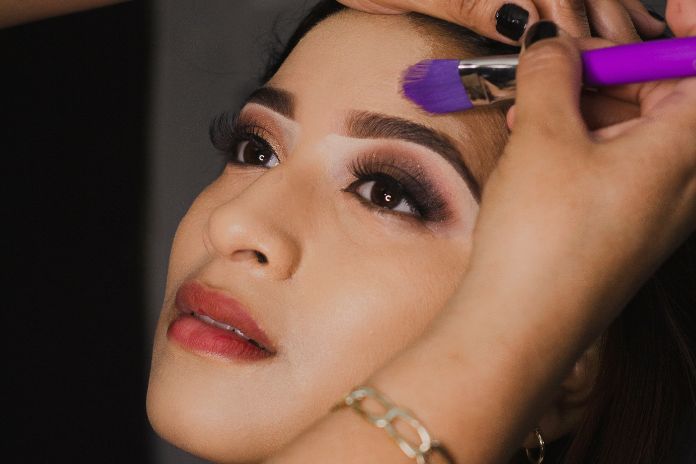Acrylic paint is a popular choice for various forms of artwork due to its versatility, affordability, and vibrant color pigments. But can you use acrylic paint on your face? The answer is not as straightforward as a simple yes or no.
In this article, we will discuss everything you need to know about using acrylic paint on your face, including its safety, application techniques, and potential risks.
Contents
Is Acrylic Paint Safe for Skin?
Acrylic paint is not specifically formulated for use on skin and should not be considered a safe option for face painting. The paint contains a variety of chemicals and additives that may cause skin irritation, allergic reactions, or other adverse effects.
Some people may argue that certain types of acrylic paint, such as non-toxic or water-based options, are safe for use on the face. While these may be less harmful than other types of acrylic paints, they are still not intended for skin contact and may pose a risk to your health.
Therefore, it is recommended to use paint that is specifically designed for use on the face, such as face paint or body paint, to avoid any potential harm to your skin.
Tips for Using Acrylic Paint on Face
If you still decide to use acrylic paint on your face, here are some tips to keep in mind:
- Avoid using paint that contains heavy metals, such as lead or cadmium.
- Use a small amount of paint and apply it in thin layers to avoid clogging your pores.
- Mix the paint with a moisturizer or a primer to make it more skin-friendly.
- Test the paint on a small area of your skin first to check for any adverse reactions.
- Avoid using acrylic paint near your eyes or mouth.
Precautions to Take When Using Acrylic Paint on Face
To minimize the risk of skin irritation or other adverse effects, take the following precautions when using acrylic paint on your face:
- Wash your face thoroughly before and after applying the paint.
- Use a gentle, non-toxic cleanser to remove the paint.
- Apply a moisturizer or a calming cream after removing the paint to soothe your skin.
- If you experience any redness, itching, or other symptoms after using acrylic paint on your face, stop using it immediately and seek medical advice.
Potential Risks of Using Acrylic Paint on Face
Using acrylic paint on your face may pose various risks, including:
- Skin irritation or allergic reactions
- Clogging of pores, leading to acne or other skin problems
- Inhalation of paint fumes, causing respiratory problems
- Absorption of toxic chemicals through the skin, leading to health issues
Therefore, it is best to avoid using acrylic casino online paint on your face, especially if you have sensitive skin or respiratory problems.
How to Remove Acrylic Paint from Face
If you have used acrylic paint on your face, here are some tips to remove it safely:
- Use a gentle cleanser or baby oil to soften the paint.
- Gently massage the cleanser or oil onto your skin using circular motions.
- Wipe off the paint with a soft, damp cloth or tissue.
- Repeat the process until all the paint is removed.
- Wash your face with a gentle cleanser and apply a moisturizer.
Frequently Asked Questions (FAQs)
Can I use acrylic paint on my face for Halloween or other events?
While acrylic paint may seem like a cheap and easy option for face painting, it is not recommended due to the potential risks and health hazards. It is best to use face paint or body paint that is specifically designed for use on the skin.
Is non-toxic acrylic paint safe for face painting?
Non-toxic acrylic paint may be less harmful than other types of acrylic paint, but it is still not intended for use on the skin. To ensure the safety of your skin, use face paint or body paint that is specifically formulated for this purpose.
Can I use acrylic paint on my body?
Acrylic paint is not recommended for use on the skin, including the body, due to the potential risks and health hazards. It is best to use body paint that is specifically designed for use on the skin.
How can I make acrylic paint more skin-friendly?
To make acrylic paint more skin-friendly, you can mix it with a moisturizer or a primer. This will make the paint less harsh on the skin and easier to remove.
What should I do if I experience an adverse reaction to acrylic paint on my face?
If you experience any redness, itching, or other symptoms after using acrylic slot gacor terpercaya paint on your face, stop using it immediately and seek medical advice. It is important to take any adverse reactions seriously and to protect your skin from further harm.
Conclusion
In conclusion, using acrylic paint on your face may not be the safest option for face painting. While it is possible to use slot gacor it with certain precautions and techniques, it is recommended to use face paint or body paint that is specifically formulated for use on the skin. By taking the necessary precautions and avoiding potential risks, you can enjoy a safe and enjoyable face painting experience.

